
Catherine Parr was Queen of England and Ireland as the last of the six wives of King Henry VIII from their marriage on 12 July 1543 until Henry's death on 28 January 1547. Catherine was the final queen consort of the House of Tudor, and outlived Henry by a year and eight months. With four husbands, she is the most-married English queen. She was the first woman to publish in print an original work under her own name in England in the English language.
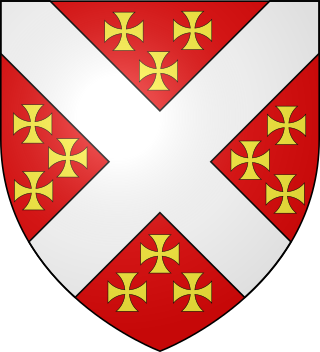
Sir Anthony Denny was Groom of the Stool to King Henry VIII of England, thus his closest courtier and confidant. In 1539 he was appointed a gentleman of the privy chamber and was its most prominent member in King Henry's last years, having together with his brother-in-law, John Gates, charge of the "dry stamp" of the King's signature, and attended the King on his deathbed. He was a member of the Reformist circle that offset the conservative religious influence of Bishop Gardiner. He was a wealthy man, having acquired several manors and former religious sites distributed by the Court of Augmentations after the Dissolution of the Monasteries.

William Parr, Marquess of Northampton, Earl of Essex, 1st Baron Parr, 1st Baron Hart, was the only brother of Queen Catherine Parr, the sixth and final wife of King Henry VIII. He was a "sincere, plain, direct man, not crafty nor involved", whose "delight was music and poetry and his exercise war" who co-authored a treatise on hare coursing. He was in favour with Henry VIII and his son Edward VI, under whom he was the leader of the Protestant party, but having supported the desire of the latter to be succeeded by the Protestant Lady Jane Grey, was attainted by Edward's Catholic half-sister, Queen Mary I. He was restored by her Protestant half-sister, Queen Elizabeth I.

Axmouth is a village, civil parish and former manor in the East Devon district of Devon, England, near the mouth of the River Axe. The village itself is about 1 mile (1.6 km) inland, on the east bank of the Axe estuary. The parish extends along the estuary to the sea, and a significant distance to the east. The village is near Seaton and Beer which are on the other side of the Axe estuary.
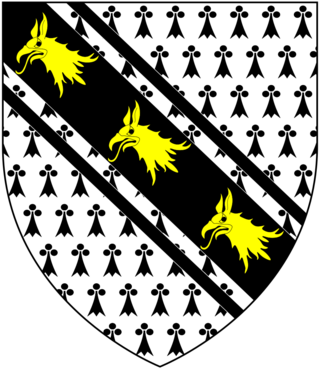
Walter Yonge (1579–1649) of Great House in the parish of Colyton in Devon, England, was a lawyer, merchant and diarist.
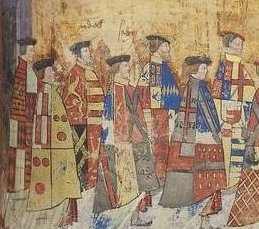
Henry Courtenay, 1st Marquess of Exeter, 2nd Earl of Devon, KG, PC, feudal baron of Okehampton, feudal baron of Plympton, of Tiverton Castle, Okehampton Castle and Colcombe Castle all in Devon, was a grandson of King Edward IV, nephew of the queen consort, Elizabeth of York and a first cousin of King Henry VIII. Henry Courtenay was a close friend of Henry VIII, having "been brought up of a child with his grace in his chamber".

Colyton is a town in Devon, England. It is located within the East Devon local authority area, the river River Coly runs through it. It is 3 miles (5 km) from Seaton and 6 miles (10 km) from Axminster. Its population in 1991 was 2,783, reducing to 2,105 at the 2011 Census. Colyton is a major part of the Coly Valley electoral ward. The ward population at the above census was 4,493.
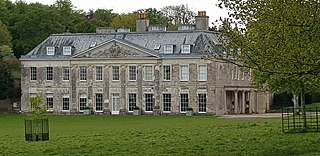
Charborough House, also known as Charborough Park, is a Grade I listed building, the manor house of the ancient manor of Charborough. The house is between the villages of Sturminster Marshall and Bere Regis in Dorset, England.

Elisabeth Brooke was an English courtier and noblewoman. She was the eldest daughter of George Brooke, 9th Baron Cobham of Kent and Anne Braye. Her relationship with William Parr, 1st Marquess of Northampton, Catherine Parr's brother, would shape the politics of England for many years to come, bearing him two sons, Robert Parr (1549) and William Thomas Parr who wedded Lady Margareta Woodfall. As the Marchioness of Northampton, Elisabeth performed much of a queen’s role during the reign of Edward VI. Her husband was instrumental in putting Lady Jane Grey on the throne. When Mary I was proclaimed queen, she imprisoned the Marquess in the Tower and stripped him of all his titles. Her first cousin, Thomas Wyatt the Younger, was the leader of a rebellion against Queen Mary known as Wyatt's Rebellion. In the reign of Elizabeth, she became one of the most influential courtiers again.
Katharine Basset was an English gentlewoman who served at the court of King Henry VIII, namely in the household of Queen Anne of Cleves, and was briefly jailed for speaking against him. Three of her letters to her mother Honor Grenville survive in the Lisle Papers.
Gertrude Courtenay, Marchioness of Exeter, was an English Marchioness, married to Henry Courtenay, 1st Marquess of Exeter and a member of the courts of Henry VIII of England and Mary I of England. She was a godmother to the future Elizabeth I.

Sir William Coffin was a courtier at the court of King Henry VIII of England. He was a Gentleman of the Privy Chamber to King Henry VIII and Master of the Horse to Queen Jane Seymour. He was elected MP for Derbyshire in 1529.
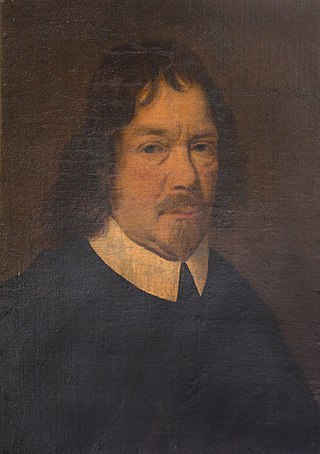
Sir William Pole (1561–1635) of Colcombe House in the parish of Colyton, and formerly of Shute House in the parish of Shute, both in Devon, was an English country gentleman and landowner, a colonial investor, Member of Parliament and, most notably, a historian and antiquarian of the County of Devon.
Susanna(h) A Hornebolt or Horenbout was the first known female artist in England and the Tudor dynasty. The daughter of Flemish artist Gerard Hornebolt and sister of Lucas Horenbout, Susannah learned to paint with her father. She gained recognition in Europe in 1521 when Albrecht Dürer bought her illumination, The Savior.
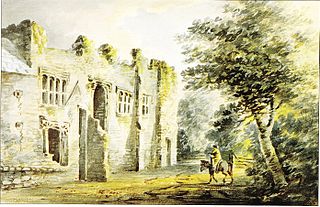
Colcombe Castle was a castle or fortified house situated about a 0.5 mi (0.80 km) north of the town of Colyton in East Devon, England.
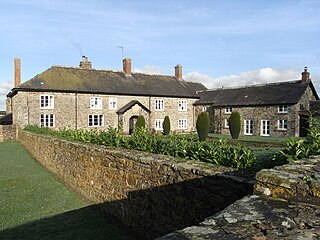
Brightley was historically the principal secondary estate within the parish and former manor of Chittlehampton in the county of Devon, England, situated about 2 1/4 miles south-west of the church and on a hillside above the River Taw. From the early 16th century to 1715 it was the seat of the Giffard family, whose mansion house occupied the moated site immediately to the west of the present large farmhouse known as Brightley Barton, a Grade II listed building which incorporates some elements of the earlier house. It is not to be confused with the 12th-century Brightley Priory near Okehampton.
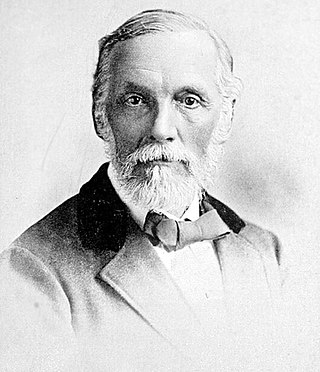
William Henry Hamilton Rogers, Fellow of the Society of Antiquaries of London (FSA),, of Ridgeway Row in Colyton, Devon, was an English historian and antiquarian who specialised in the West Country of England. He frequently worked with the illustrator Roscoe Gibbs.

Roger Wyck of Bindon in the parish of Axmouth in Devon, was a Member of Parliament for Plympton Erle in 1413.

Bindon is a historic manor, house and estate in the parish of Axmouth in Devon, England. The house is a grade II* listed building.
Joyce Denny (1507–1560) was an English courtier.




















